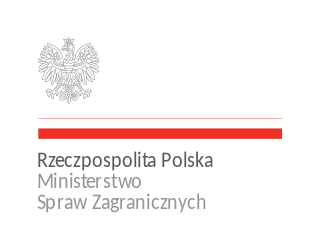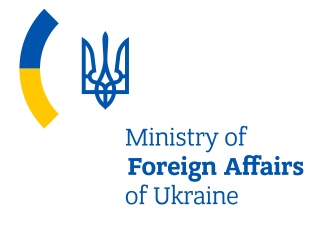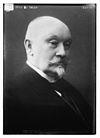
The Ministry of Agriculture, Fisheries and Food (MAFF) was a United Kingdom government department created by the Board of Agriculture Act 1889 and at that time called the Board of Agriculture, and then from 1903 the Board of Agriculture and Fisheries, and from 1919 the Ministry of Agriculture and Fisheries. It attained its final name in 1955 with the addition of responsibilities for the British food industry to the existing responsibilities for agriculture and the fishing industry, a name that lasted until the Ministry was dissolved in 2002, at which point its responsibilities had been merged into the Department for Environment, Food and Rural Affairs (Defra).

The Imperial War Cabinet (IWC) was the British Empire's wartime coordinating body. It met over three sessions, the first from 20 March to 2 May 1917, the second from 11 June to late July 1918, and the third from 20 or 25 November 1918 to early January 1919. Consisting of representatives from Canada, Australia, India, the Dominion of Newfoundland, New Zealand, South Africa and the United Kingdom, the Cabinet considered many aspects of waging the First World War. It led to the United Kingdom's Dominions being considered more equal to Great Britain. Held concurrently with the cabinet were the Imperial War Conferences of 1917 and 1918.

The Belarusian People's Republic (BPR), or Belarusian National Republic (BNR), historically referred to as the White Ruthenian Democratic Republic, was a failed attempt to create a Belarusian state on the territory controlled by the German Imperial Army during World War I. The BNR existed from 1918 to 1919.

The Ministry of Foreign Affairs is the Polish government department tasked with maintaining Poland's international relations and coordinating its participation in international and regional supra-national political organisations such as the European Union and United Nations. The head of the ministry holds a place in the Council of Ministers.
Supreme Board of the National Economy, Superior Board of the People's Economy, was the superior state institution for management of the economy of the RSFSR and later of the Soviet Union. There were two institutions with this name, at different times, 1917–1932 and 1963–1965.
State Supplies of the USSR, known as the Gossnab of USSR was active from 1948 to 1953, and 1965 to 1991. It was the state committee for material technical supply in the Soviet Union. It was charged with the primary responsibility for the allocation of producer goods to enterprises, a critical state function in the absence of markets.

The Azerbaijan Democratic Republic, was the first successful secular democratic republic in the Turkic and Muslim worlds. The ADR was founded by the Azerbaijani National Council in Tiflis on 28 May 1918 after the collapse of the Transcaucasian Democratic Federative Republic. Its established borders were with Russia to the north, the Democratic Republic of Georgia to the north-west, the First Republic of Armenia to the west, and Iran to the south. It had a population of around 3 million. Ganja was the temporary capital of the Republic as Baku was under Bolshevik control. The name of "Azerbaijan" which the leading Musavat party adopted, for political reasons, was, prior to the establishment of the Azerbaijan Democratic Republic in 1918, exclusively used to identify the adjacent region of contemporary northwestern Iran.

The First Republic of Armenia, officially known at the time of its existence as the Republic of Armenia, was the first modern Armenian state since the loss of Armenian statehood in the Middle Ages.
The Royal Norwegian Ministry of Provisioning and Reconstruction was a Norwegian ministry that existed from 1939 to 1950.
The Royal Norwegian Ministry of Industrial Provisioning was a Norwegian ministry that existed from 1917 to 1922.

The Ministry of Foreign Affairs of Ukraine is the Ukrainian government authority that oversees the foreign relations of Ukraine.

Mammad Hasan Jafargulu oglu Hajinski was an Azerbaijani architect and statesman. He also served as a Minister for Foreign Affairs of Azerbaijan Democratic Republic (ADR) and the last Prime Minister of ADR.

The Ministry of Labour and Social Protection of the Population of the Azerbaijan Republic is a governmental agency within the Cabinet of Azerbaijan in charge of regulating the labour markets and ensuring social protection of the population of Azerbaijan. The ministry was headed by Salim Muslumov until 2018. Current minister of Labour and Social Protection of the Population is Sahil Babayev. He is appointed to this position based on presidential decree dated 21 April 2018.
Statens metalcentral was a distribution organization in Norway.

The Holman ministry or Second Holman ministry or Holman Nationalist ministry was the 36th ministry of the New South Wales Government, and was led by the 19th Premier, the Honourable William Holman, MLA.

The Additional Civil Lord of the Admiralty or formally the Office of the Additional Civil Lord of the Admiralty sometimes called the Department of the Additional Civil Lord of the Admiralty was a member of the Board of Admiralty first from 1882 to 1885 and then again from 1912 to 1919 who was mainly responsible for administration of contracts for matériel for the Fleet, supervision of the contracts and purchase department and general organisation of dockyards within the Admiralty.













